Nuclear submarine USS Halibut (SSGN-587). Part II: Scouting Ship
Recall that the construction of the USS Halibut missile carrier ("Halibut") lasted less than two years, and at the very beginning of 1959, it was launched. For about a year the ship was on trial, after which it was accepted into the US Navy. A few months after the flag-raising ceremony, the submarine went to the service station, the Pearl Harbor Hawaiian base. Over the next few years, the crew of the boat repeatedly went to sea to solve various tasks.
From the other submarines of its time, "Halibus" favorably distinguished by a combination of two characteristics. Thus, thanks to a nuclear power plant, the autonomy of navigation — including at depth — was limited only to provisions. The submarine’s highest combat power was provided by the SSM-N-8 Regulus cruise missiles, which flew 500 nautical miles and carried a special warhead. A power plant and missile armament made the submarine USS Halibut (SSGN-587) a unique percussion vehicle.
However, before the end of construction, the ship had problems. In 1957, the leadership of the Pentagon conducted an analysis of the Regulus project, and decided to abandon such missiles, which turned out to be too expensive, difficult and inconvenient for full-fledged operation. In the foreseeable future, ships and submarines were to receive other missile weapons. Despite this decision, the construction of "Halibus" was continued on the original project. As a result, the finished boat, which entered service in the 1960 year, was armed precisely with SSM-N-8 rockets.
Within the framework of the tests, the underwater bomber carried out its first firing using existing missiles. Over the next few years, the crew repeatedly performed fire missions and launched Regulus missiles. In March, 1964, the ship USS Halibut (SSGN-587) for the last time went on a campaign, having on board cruise missiles. In the autumn, he returned from military service, and such ammunition was permanently unloaded from the weapons compartment.
At the start of 1965, the “Halibus” was sent to the Pearl Harbor shipyard for mid-level repairs. During these works, the specialists removed some systems and installed others. In accordance with the updated project, now the USS Halibut submarine was to carry only torpedo armament. After dismantling the missile system, the ship was transferred to the category of torpedo submarines and received the SSN-587 tail number.
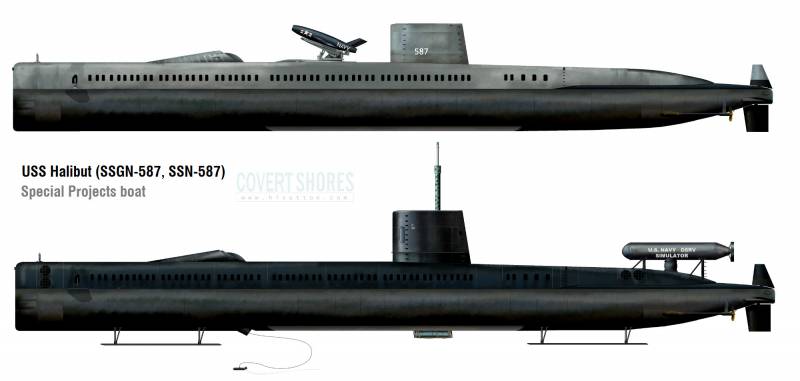
Comparison of "Halibus" in the original rocket (above) and new reconnaissance (below) configurations. Figure Hisutton.com
The released volumes of the hull were proposed to be used to house some special equipment. In particular, the submarine was able to carry and use remote-controlled reconnaissance vehicles. In the new configuration, the ship returned to service at the end of the summer 1965.
In July, 1968, having received a certain amount of special equipment, the USS Halibut submarine took part in its first special mission. As part of the operation Sand Dollar, the crew examined the Pacific Ocean, where in the spring the Soviet submarine K-129 sank. With the help of several new instruments, American specialists were able to quickly find the place of the missile carrier’s death. Also, with the help of a remotely controlled vehicle, a large number of photographs of the dead boat were taken.
In August, 1968, the boat went to the shipyard Mare Island Naval Shipyard (pcs. California) for the next repair. This time, the command decided not only to restore the submarine, but also to conduct a full-scale modernization. As part of this work, it was proposed to seriously change the purpose of the ship. In accordance with existing plans, the USS Halibut was supposed to be a special reconnaissance submarine. To do this, it was necessary to remove part of the equipment from it, and install new special-purpose devices to the vacant space.
The modernization project provided for the preservation of the main structural units when installing a variety of additional equipment that was not previously available. In accordance with the new terms of reference, a variety of reconnaissance tools, systems for providing divers' activities, etc., were to be on board the “Halibus”. To solve such problems, it was proposed to retool the existing volumes, as well as add some new devices.
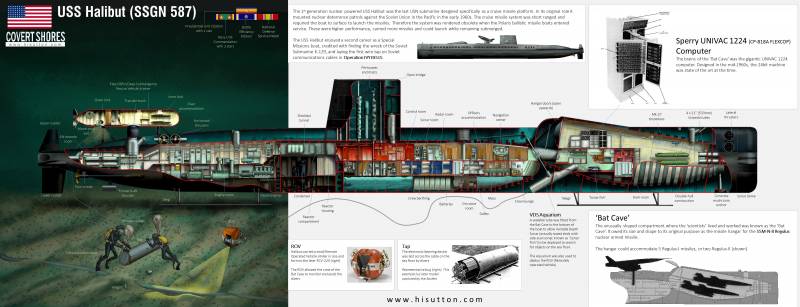
Scheme of the submarine after the upgrade and the basic elements of special equipment. Figure Hisutton.com
In the original version, the submarine USS Halibut had a multi-unit design. It was based on two sturdy shells, located one after the other and covered with a common light body. A robust front hull, characterized by a complex shape with a raised aft, was originally used to accommodate torpedo and missile weapons. In the new project, it was proposed to install a part of special equipment.
The aft part of the front hull was redone and became two-tier. Its upper room was intended for the placement of new electronics, while in the lower rooms it should have been used as a warehouse of equipment, a photographic laboratory, etc. The front compartment still contained the torpedo armament. In the curved aft of the robust hull there was an opening for the installation of an inclined sluice chamber, placed on the bottom of the light hull.
The second robust case, in general, remained without major changes. Its nasal and central parts contained the central and other posts, inhabited and household premises. Also, the protruding wheelhouse was preserved, covered by a large fence. In the central compartment, shifted to the stern, there was a nuclear reactor with a part of auxiliary equipment. The feed of the second strong hull was given for steam turbine installations, generators, etc. The aft compartment served as a torpedo. In addition, a gateway was located above it to communicate with the new external enclosure.
The submarine retained Westinghouse’s S3W reactor and two HP 7300 steam turbines. Two propeller shafts with their own propellers also remained in place. In this case, measures were taken to improve maneuverability. In addition to the standard stern rudders, the ship was equipped with several thrusters. Two transverse tubular channels with screws appeared in the fore and aft parts of the light hull. In addition, under the bottom of the stern, they installed a similar device that provided forward and backward movement.
Some special tasks should be solved at the bottom. For this, the submarine received a couple of additional anchors in the bow and stern. Also on the bottom there were supports-skis, preventing the ground from touching the light body and protecting the latter from possible damage.
It was decided to keep the torpedo armament, corresponding to the original project. Four torpedo tubes with a caliber of 533 mm remained in the nose case. Two more such devices were in the stern. The absence of missiles and the appearance of additional internal volumes made it possible to increase the ammunition load to some extent. However, the specificity of the main tasks allowed USS Halibut to do without weapons.
The largest and most noticeable new device installed on the reconnaissance submarine during repairs was the diving bay, made in the form of a separate durable hull. A torpedo-shaped metal unit was placed in the aft part of the “Halibut” with the help of several supports. The function of the central support was performed by a vertical tunnel with a gateway. The bow section of the robust hull contained the living compartment and had a direct connection with the submarine carrier. The feed was given under the gateway to go outside.
The second airlock, called VDS Aquarium, intended for remotely controlled equipment, was placed under the stern of the strong front hull. This camera has received a means of issuing a control cable. The latter, differing in great length, was stored on its own coil under the deck of the light hull. Inside the robust hull was an openable chamber lid, which could be used to bring special equipment out of the boat.
The VDS Aquarium system was offered to work with remotely controlled devices of two types. The product Sonar fish (“Hydroacoustic Fish”) had its own power unit and was equipped with a hydroacoustic antenna. Such a device was supposed to complement the standard hydroacoustic systems of the carrier ship and provide monitoring of various parts of the surrounding space.
Also for the submarine USS Halibut was developed a remotely controlled vehicle ROV (Remote-Operated Vehicle). This system was equipped with a video camera and a searchlight. It was proposed to use it to inspect underwater objects or to monitor the work of divers who went outside.
To solve special problems, the submarine received a new combat information and control system. Its structure was attended by new sophisticated devices for one purpose or another. The main innovation in the field of electronics was the computer UNIVAC 1224 company Sperry. Large and heavy elements of such a computer were placed in the stern of the front solid hull and had a connection with a number of onboard systems.
Despite numerous changes and improvements, the main dimensions of the ship remained the same. The length of the USS Halibut after the upgrade was 106,7 m, width - up to 8,8 m. In the surface position, the displacement remained at the level of 3,66 thousand tons, in the submarine - exceeded 5 thousand tons. knots. The range of navigation was limited only by food supplies.
In 1971, the upgraded reconnaissance nuclear submarine was returned to service and became part of the Submarine Development Group One compound based in the port of San Diego. Over the next few years, "Halibus" repeatedly left the base to perform certain special tasks. Details of some missions were subsequently published, while other operations are still classified. Nevertheless, even the well-known data reveal the possibilities of the converted submarine.
At the very beginning of the seventies, the American command found out about the existence of a cable communication line connecting the Soviet naval facilities of Petropavlovsk-Kamchatsky and Vladivostok. The cable ran along the bottom of the Sea of Okhotsk, and the corresponding areas were covered with a hydroacoustic complex and patrolled by ships. Soon, the reconnaissance structures and the US Navy were tasked to locate the cable and organize a covert data acquisition from it. This operation was code-named Ivy Bell.
In October, a special configuration of the USS Halibut 1971 submarine was able to secretly penetrate the protected area and find a communication cable. During the search, the divers were also able to pick up the pieces of the P-500 anti-ship missile Basalt on board. Subsequently, they were transferred to specialists for study. Having found the communication cable, the experts installed the The Tap product on it. It was a tube length 6 m, equipped with the necessary equipment. “Tap” literally put on the cable; Interception was carried out without damage to the outer layers of the cable, the data were recorded on its own media. In the case of a cable lift, the reconnaissance equipment should have independently discarded it and remained at the bottom.
Subsequently, the US Navy regularly conducted special operations, during which the scouts secretly approached The Tap, took the magnetic tape with records and left it clean. Operation Ivy Bell lasted until the early eighties. Quite lately, Soviet intelligence was able to obtain information about listening devices, and in 1981-m, "Tap" was taken off the cable in the Sea of Okhotsk.
According to some sources, over the next few years after installing Tep on a cable in the Sea of Okhotsk, the crew of the USS Halibut submarine repeatedly received new tasks related to reconnaissance, survey of the seabed and installation of special equipment. However, detailed data on this account are not available due to the secrecy of work. It is hoped that after enough time, the Pentagon will still declassify all the data of interest to the public, and thanks to this, everyone will be able to learn the details of the service of the unique submarine.
Reconnaissance submarine "Halibus" remained in service until the summer of the 1976 year. 30 June she was withdrawn from the fleet and transferred to the reserve. In the same year, the submarine was transferred to the base of Bangor-Base (pc. Washington), where she had to wait for the order for cutting. In April, 1986, the submarine USS Halibut (SSN-587) was removed from the list of ships of the US Navy. At the beginning of autumn, the 1994 of the year was sent to dismantling a unique submarine.
The nuclear submarine USS Halibut (SSGN-587 / SSN-587) had a unique fate. Initially, it was built as the first of its kind ship carrier cruise missiles with special warheads, but the specifics of the development of weapons of the American fleet led to the need for deep modernization and restructuring. In the new configuration, the submarine lost its missile weapons, but received a large number of special equipment of various kinds, with which it could perform a wide range of special tasks. It should be noted that as a reconnaissance ship, “Halibus” brought more benefits to the Pentagon than in the original version of the submarine missile carrier.
However, over time, the submarine, which was once considered unique and had special abilities, became morally and technically outdated, as a result of which it was no longer able to continue its service. In 1976, it was withdrawn from the fleet's combat fleet to the reserve. Further processes noticeably dragged out, but in the mid-nineties, USS Halibut ceased to exist, finally giving way to new, more advanced nuclear submarines.
On the materials of the sites:
http://aboutsubs.com/
http://navsource.org/
http://hisutton.com/
http://otvaga2004.ru/
https://globalsecurity.org/
http://hullnumber.com/
http://steelnavy.com/
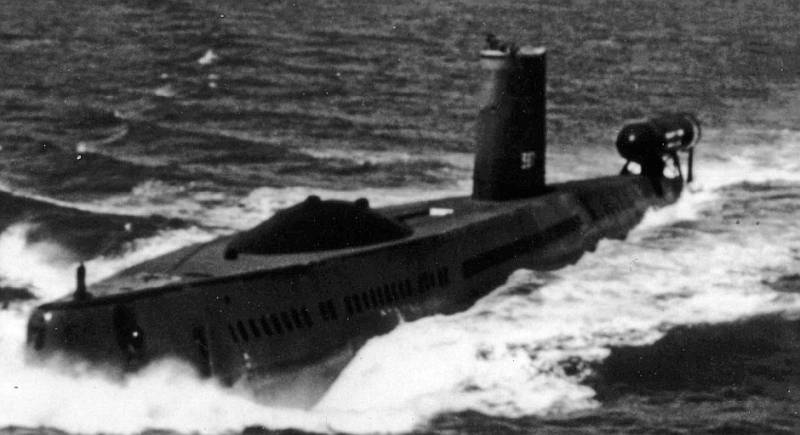
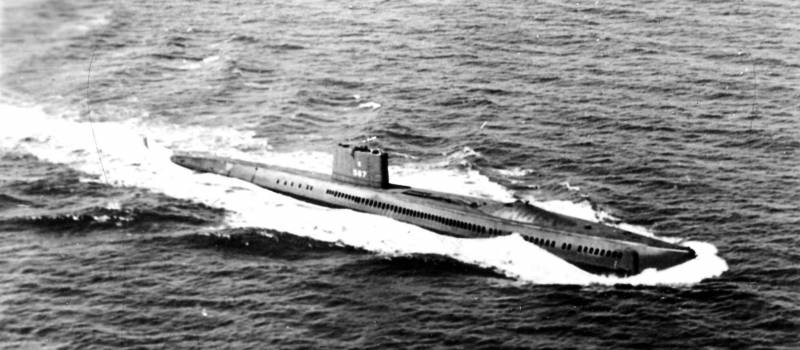
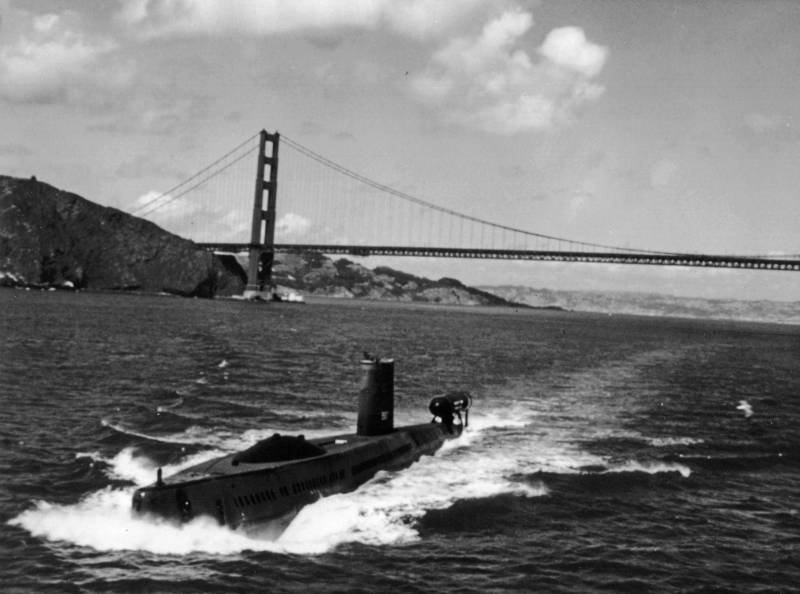
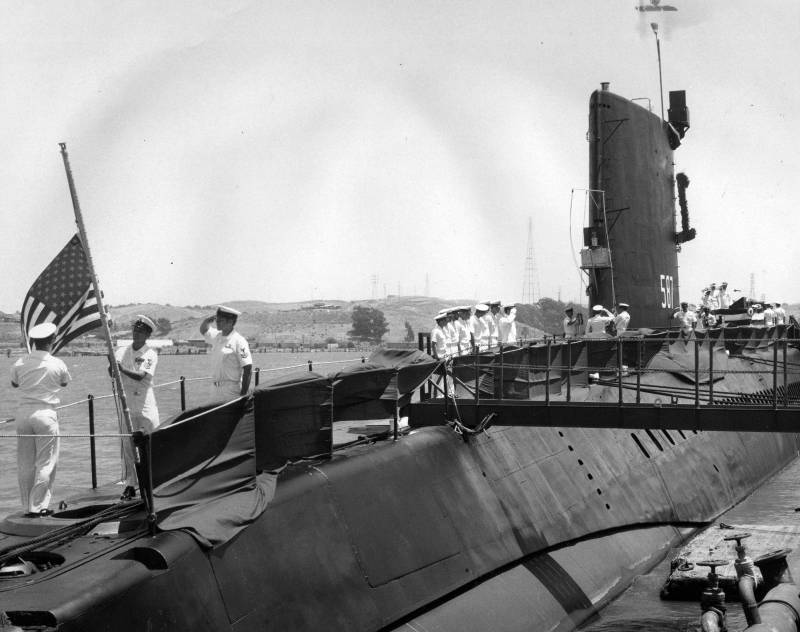
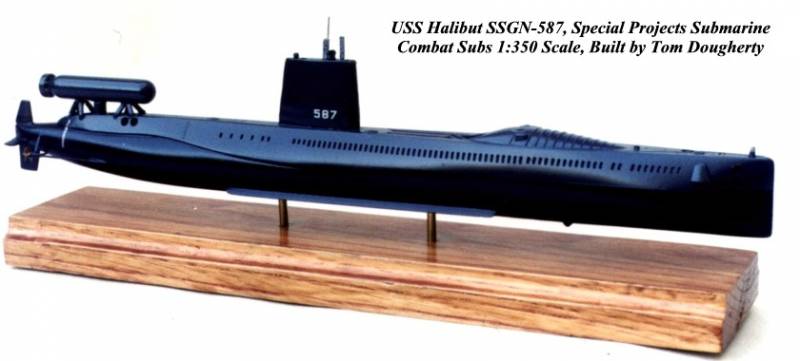
Information